The Alaçatı Wetland is an ecologically significant area renowned for its rich biodiversity and stunning scenic beauty. The wetlands have hosted a diverse array of plant species for over 6,000 years, including reeds, rushes, and other aquatic plants that are well-adapted to the wetland environment. It is an essential habitat for various bird species, including migratory birds, making it a significant spot for birdwatching. Additionally, the wetland supports a variety of fish, amphibians, and insects. The wetland plays a crucial role in water purification, flood control, and providing a habitat for wildlife. It also supports local agriculture by maintaining the groundwater levels.
While not the rarest of birds, the Greater Flamingo is the most recognisable of regular visitors to these wetlands and has been coming for several thousand years as part of its Eastern Mediterranean migration route to the Balkans. Today, the very presence of birds like the Greater Flamingo in Alaçatı is in mortal danger. It may disappear with the 150 other bird species within a decade if the development of the Alaçatı Marina continues at the current rate.
Alaçatı Wetland – Table of Contents
Location & Environment of the Alaçatı Wetland
Location: Alaçatı, Gerenye mevkii, 35930 Çeşme/İzmir
The Alaçatı Wetland is a nature reserve between the town and the marina, south of Alaçatı town, near the İzmir-Çeşme Otoyolu (0-32 motorway). The site covers approximately 250 acres of primarily salt marsh, small streams and beaches; the general vegetation consists of richly diverse, fertile silt sediments and scrubland. The lagoon-like intertidal estuary is formed by the Karşıyaka Azmağı (river), a natural watercourse flowing down from the Alaçatı Kutlu Aktaş Dam (under old İzmir road and the motorway) into the shallow waters of Alaçatı Bay and the Aegean Sea.
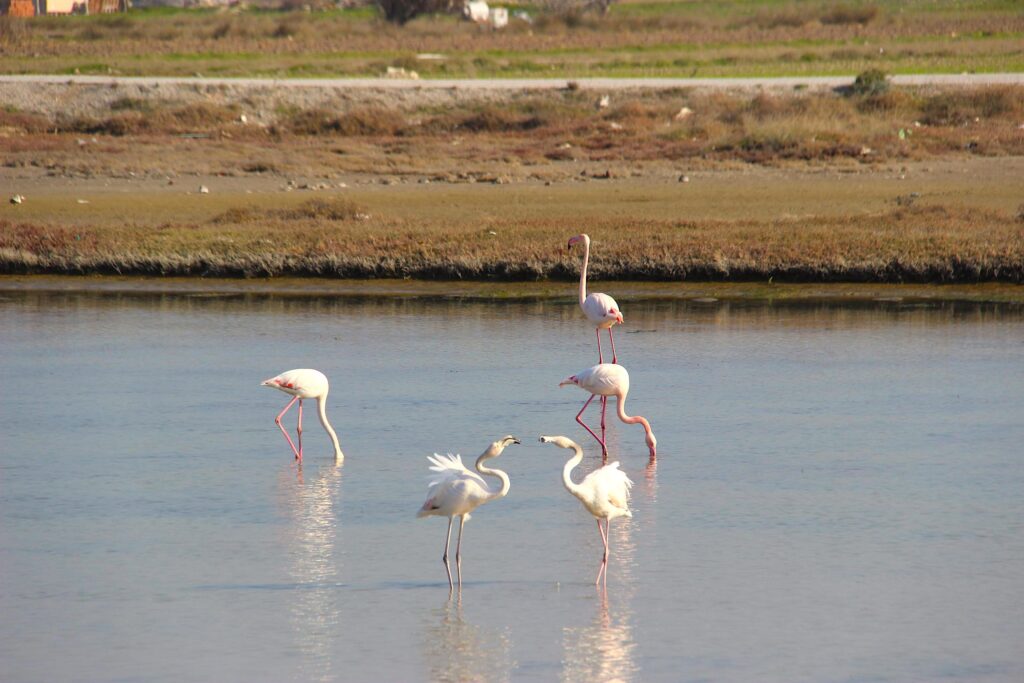
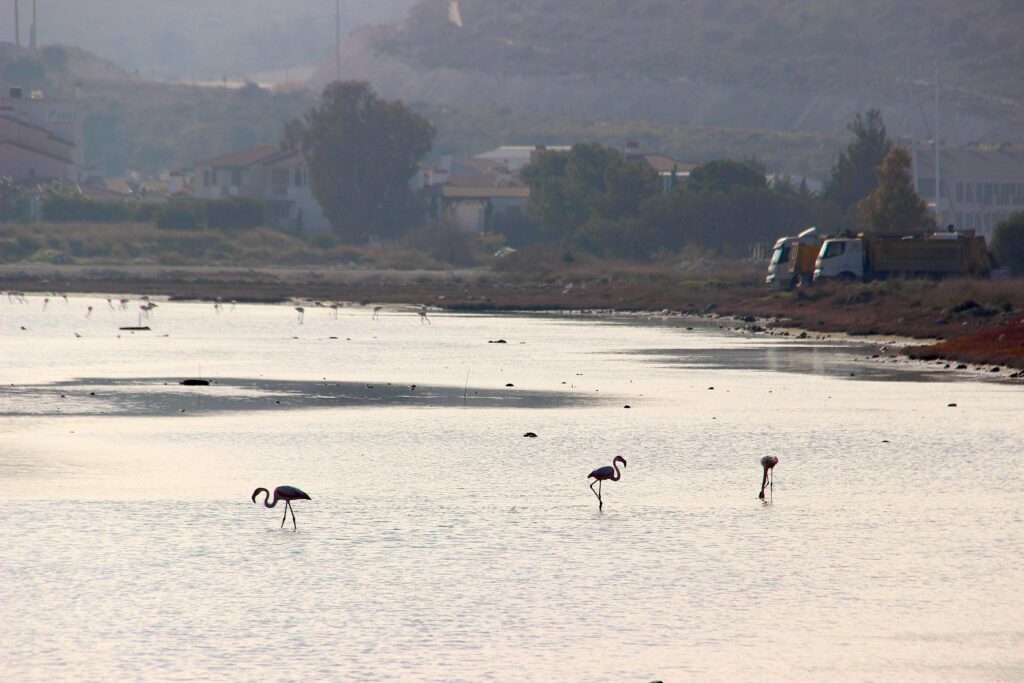

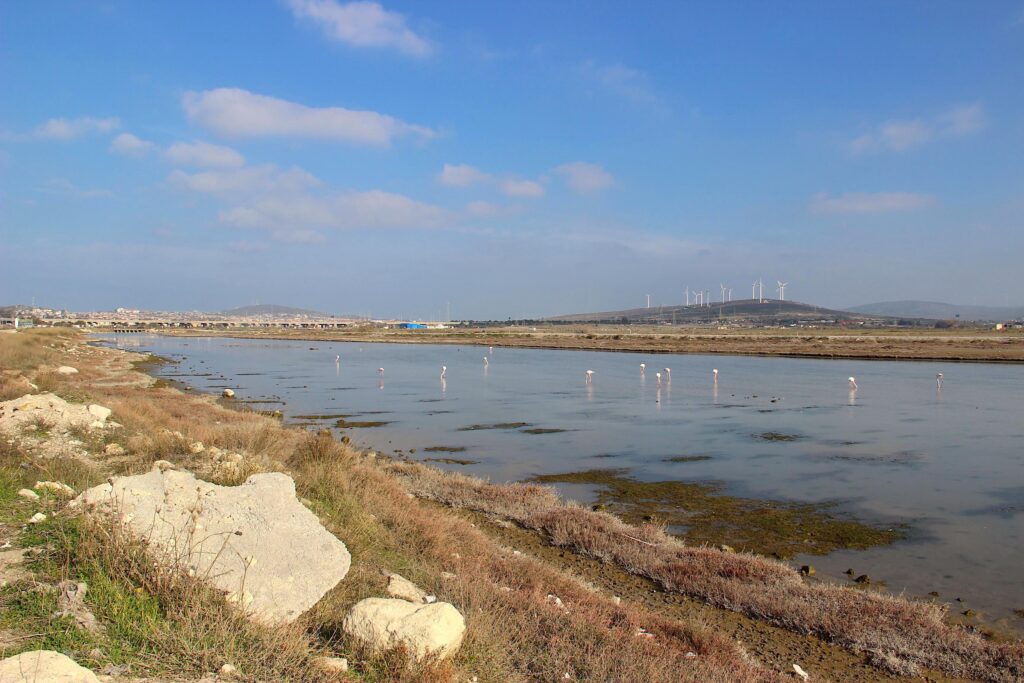

History of the Alaçatı Wetland
The wetland area sits in a low-lying basin near the Aegean coast, shaped by tectonic activity over millions of years. The combination of the Karaburun Peninsula’s geological features, seasonal streams (such as Karşıyaka Azmağı), and natural sedimentation would have allowed marshes and lagoons to form gradually. The Alaçatı swamp likely existed in some form for thousands of years, possibly since the early Holocene (10,000 years ago or earlier), although its precise origin isn’t documented. Its recognisable form as a significant wetland or marsh predates modern Alaçatı and lasted until about 1850, when efforts to control disease and develop the land began to reshape it.
During antiquity, while nearby regions flourished with ancient Greek and Roman settlements, such as Erythrai (Ildırı), the Alaçatı area remained largely a marshland, likely avoided for human habitation for thousands of years due to its rugged terrain and mosquito-infested waters. In 1850, under Ottoman rule, the swamp was drained as part of a malaria control effort, which opened the region to agriculture and settlement by nearby Greek populations until 1922. While this smaller wetland, in its current form, has been present for at least 175 years.
Greater Flamingos (Phoenicopterus roseus) have likely visited the Alaçatı Wetlands for millennia, possibly as far back as 6,000–10,000 years ago, following ancient flyways from North Africa across the Eastern Mediterranean through Anatolia and onto the wetlands and lagoons of the Balkans. Their presence there is not a modern phenomenon; it’s part of a deep-time ecological connection between birds and this coastal landscape.
Alaçatı Wetland Bird Species
The wetland provides feeding and shelter for 150 species (recorded over a six-year period) and serves as breeding grounds for 24 bird species. Studies of the Alaçatı Wetland observed 44 species throughout the year, 28 of which were sighted only in the winter and 65 migratory bird species. Of the 63 bird types on the Çeşme peninsula, 24 breed exclusively in the Alaçatı Wetlands. Some birds spotted in the wetlands include the Greater Flamingo, the Great Egret, the Little Egret and the Ruddy Shelduck.
Sezai Göksu (bird watcher & photographer – see Sezai’s website (in Turkish)) and an expert on the Alaçatı Wetland Area, listed the following bird species breeding in Alaçatı, Çeşme up until 2020: Black-winged Stilt, Kentish Plover, Little Stint, Dunlin, Calidris, Wood Sandpiper, Green Sandpiper, Marsh Sandpiper, Ruff, Bee-eaters, Red Rumped Swallow, Barn Swallow, Common House Martin, Western Yellow Wagtail, Spotted Flycatcher, Eurasian Blackcap, Zitting Cisticola, Garden Warbler, Olive Tree Warbler, Willow Warbler, Lesser Grey Shrike, European Goldfinch, Cretzschmar’s Bunting, and Mallard.
Flora of the Alaçatı Wetland
The fertile vegetation of the Alaçatı Wetland is enriched with rare endemic plants, such as Pilularia Minuta, a species of fern, rockroses – Cistus Monspeliensis and delicate Mediterranean orchids – Neotinea Lactea. Glasswort – Salicornia Europea (collected and served in local fish restaurants as a traditional meze or starter) and perennial spiny rushes – Juncaceae Acutus, are also found across the wetlands.
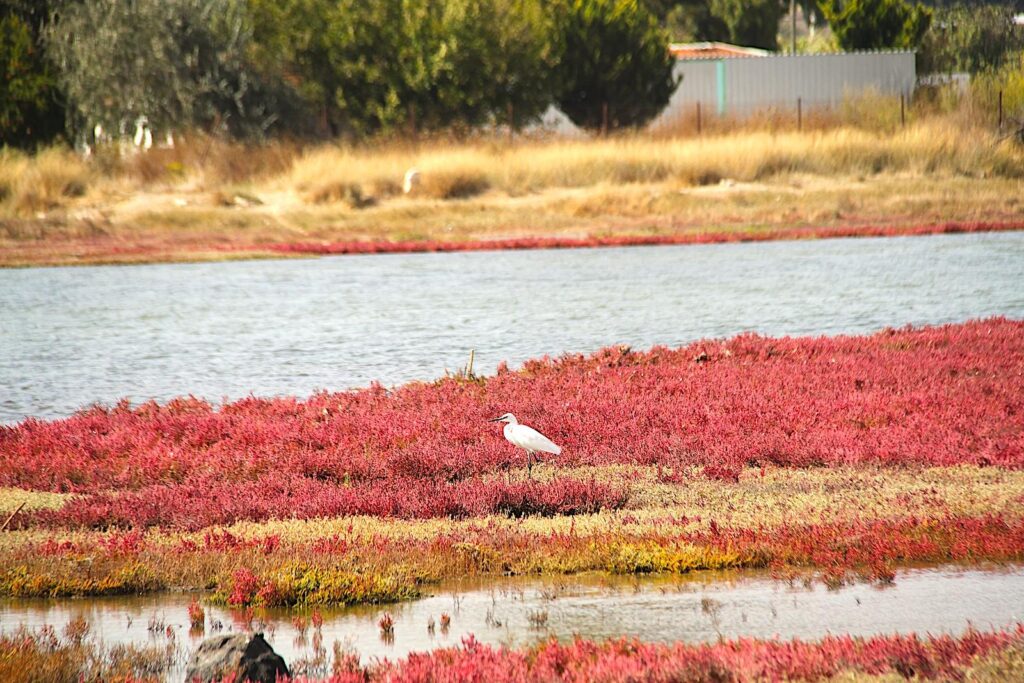

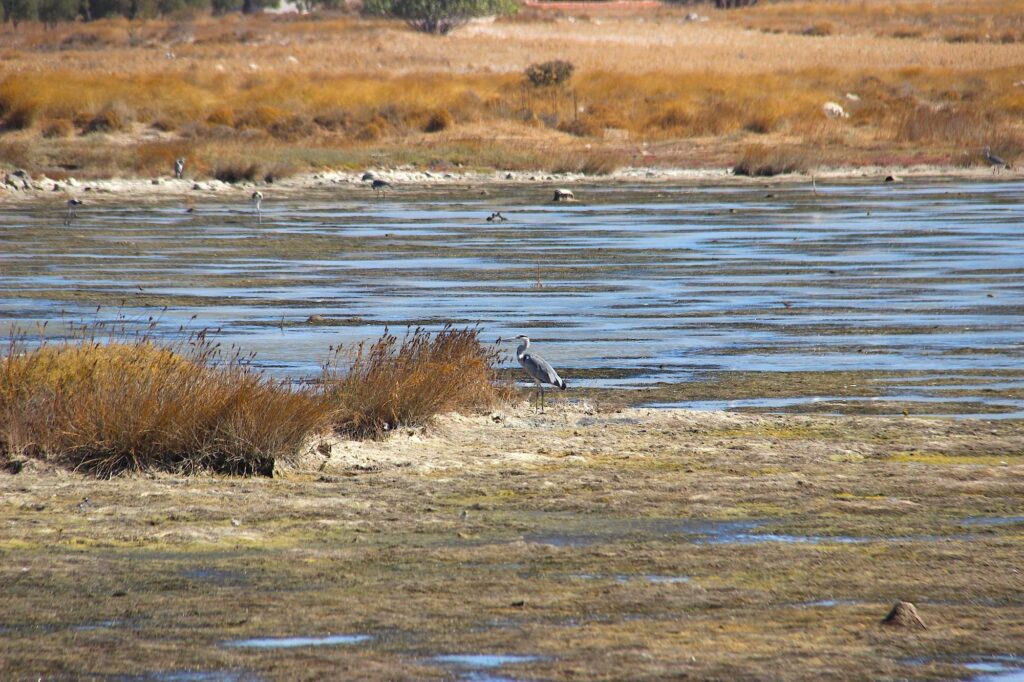
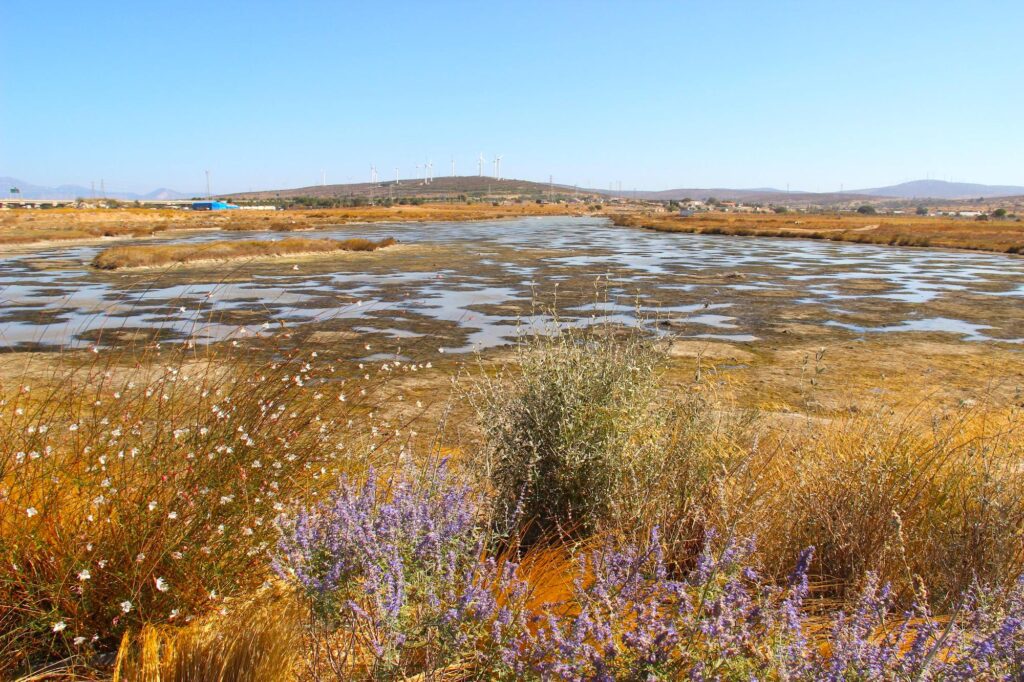
Alaçatı Town & Marina Encroachment
The area is threatened by the rapid encroachment of Alaçatı town, which is expanding south, and the development of the marina northwards. In addition to significant luxury developments, the area is also experiencing an increase in commercial infrastructure, road traffic, and the growing popularity of watersports and tourism in the bay and along the southern coast, particularly around the marina.
The Alaçatı Wetlands, a vital habitat on the Çeşme Peninsula, face an ecological catastrophe as luxury real estate, marina expansion, and commercial infrastructure encroach rapidly upon this once-protected landscape. These developments threaten the delicate wetland ecosystems that support over 150 bird species, including the Greater Flamingo (Phoenicopterus roseus).
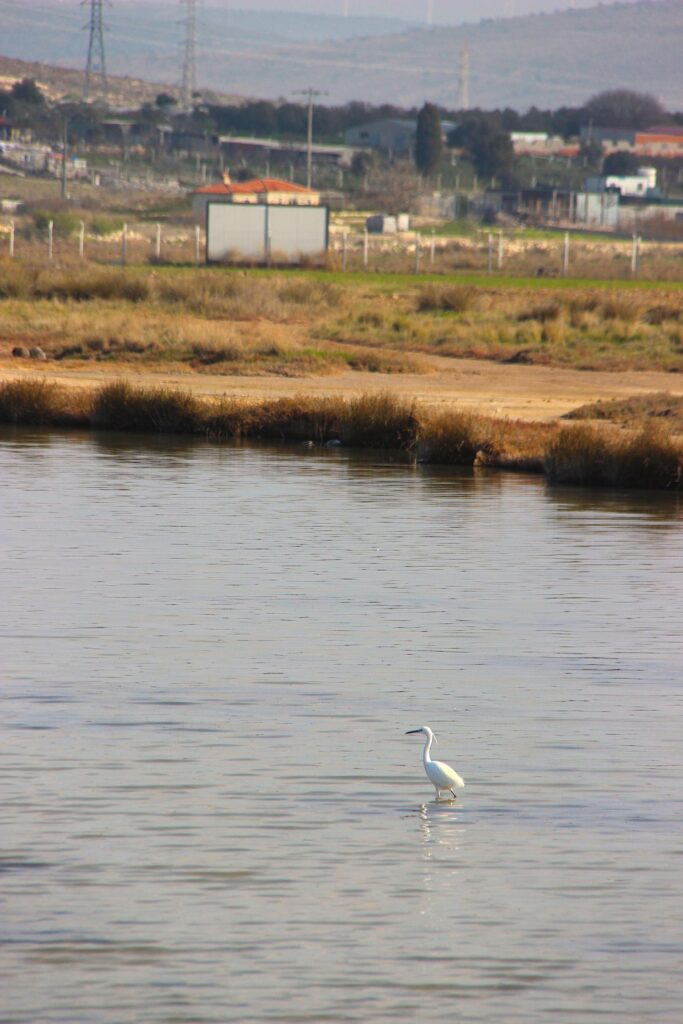

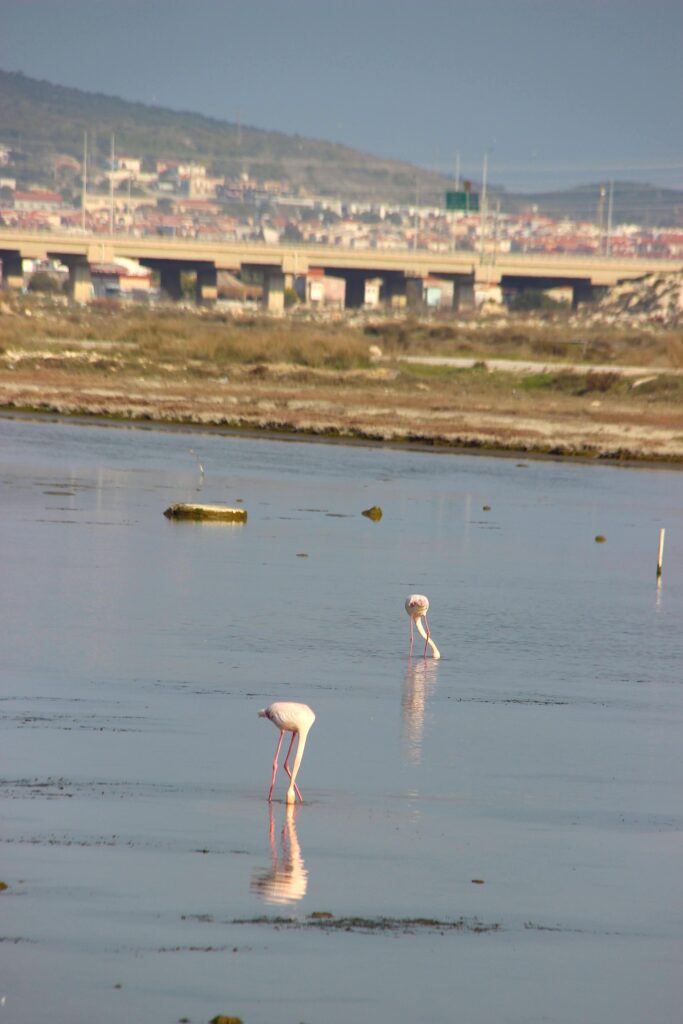
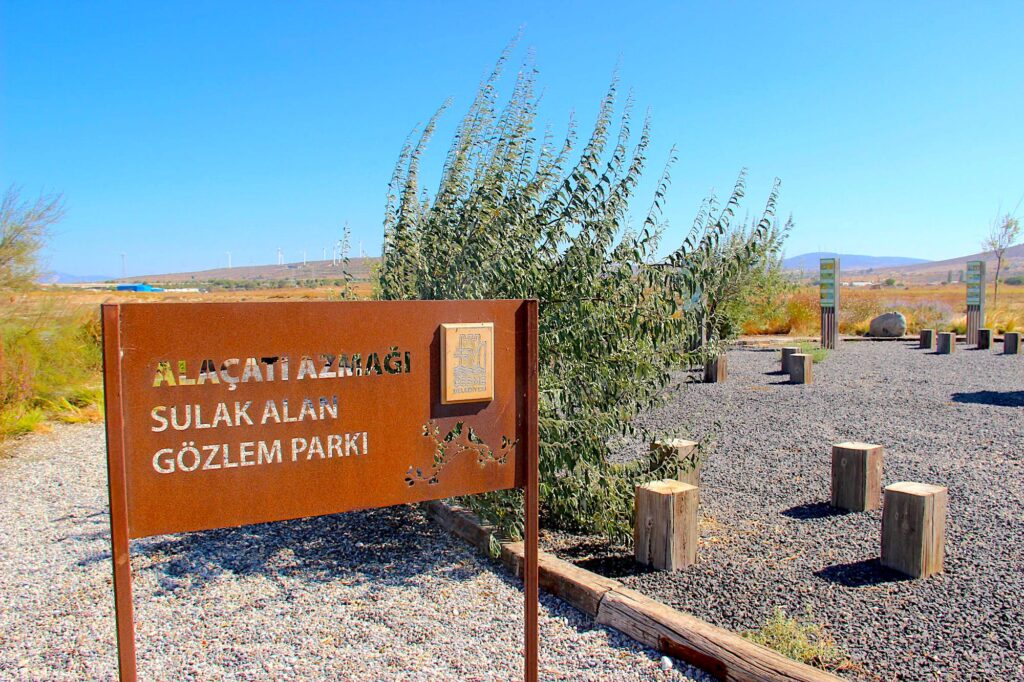

The construction of Alaçatı Marina and its associated luxury tourism complexes displaces the shallow waters and mudflats that flamingos and wading birds need to feed and rest. Development along the coast increases noise and light pollution, alters wind patterns, and introduces a constant human presence, all of which reduce the birds’ ability to nest or forage safely. Flamingos, in particular, are highly sensitive to disturbance and may abandon traditional stopover points if they sense prolonged threats. Over time, this will sever an essential link in a migration corridor that has existed for thousands of years.
The impact extends beyond direct habitat loss. The surge in road traffic, commercial activity, and tourism brings significant secondary harm: runoff pollution, sediment disruption from watersports, and physical fragmentation of wetland zones. Roads and parking areas cut through natural corridors, while chemicals and oils from vehicles and boats leak into the fragile water systems. Watersports like jet skiing and kite surfing stir up sediment layers, affecting water clarity and food availability for filter-feeding birds. These pressures create a cumulative burden that, without control, will permanently degrade the wetlands’ ecological balance.
If current trends continue, the Alaçatı Wetlands will transform from a globally significant bird sanctuary into a biologically barren coastal strip. The breeding populations of many bird species will collapse, and migratory birds, such as flamingos, will be forced to bypass the region altogether, resulting in increased mortality along their routes. This isn’t simply a local conservation issue; it’s the destruction of a unique, ancient ecosystem. Without decisive action to halt and reverse the development trajectory, we risk losing an irreplaceable part of Türkiye’s natural heritage.
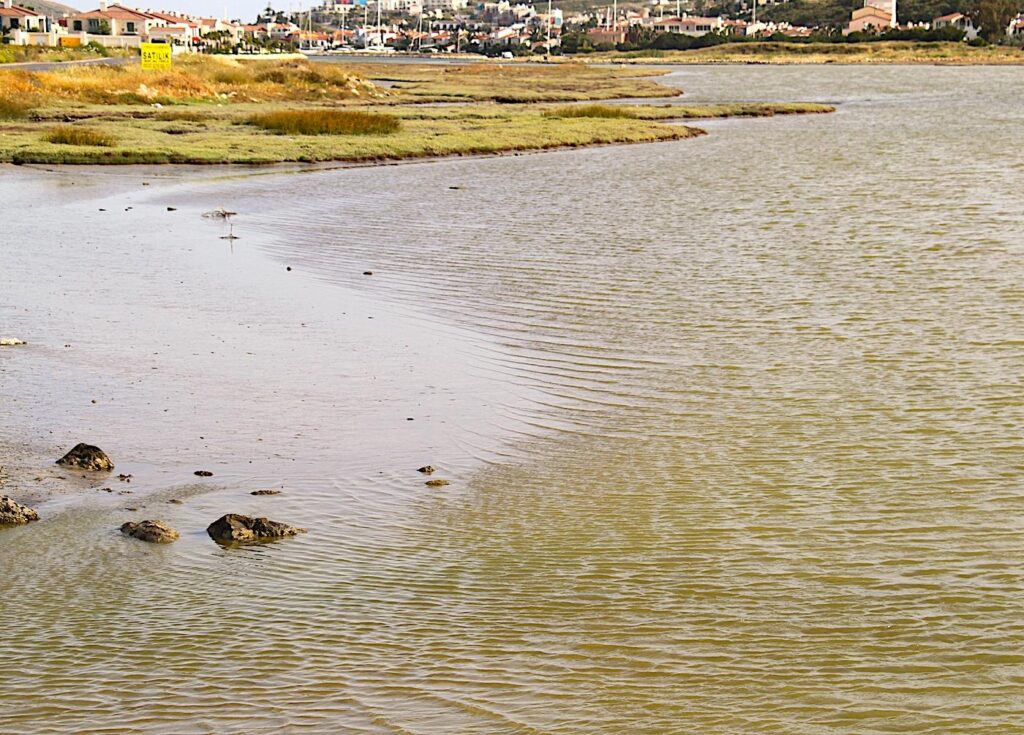
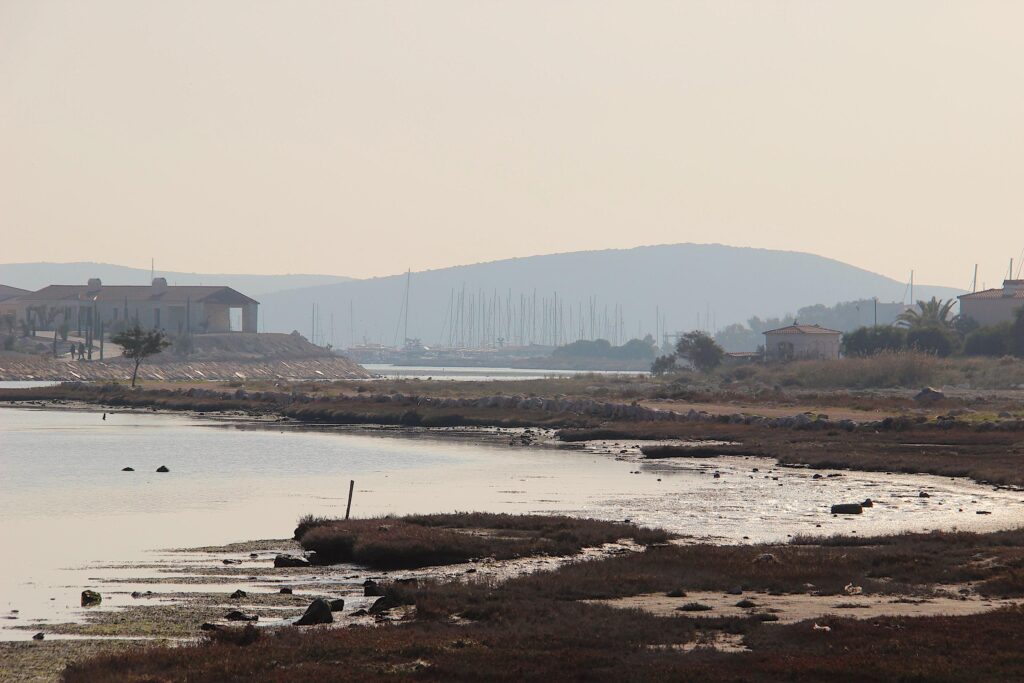

Birds of Alaçatı – Civil Environmental Movement
Birds of Alaçatı website (Turkish/English) / Facebook site
Birds of Alaçatı is an independent, unbiased, voluntary civil environmental movement. Founded in 2019 by Serap Yurdaer Erboy and supported by Elif Egeli Izmiri, the organisation aims to convey a broader and deeper understanding and recognition of the wetland’s vital importance and benefits, particularly in the case of the wetland in Alaçatı, Çeşme. It engages in developing conservation activities. They are committed to gathering and providing information about wetlands, convincing people of their manifold benefits, and promoting significant awareness and respect for nature, one of the world’s most productive yet undervalued ecosystems, particularly the Alaçatı Wetlands.
Volunteers with Birds of Alaçatı erected five information boards on the wetlands to share information about the wetlands and promote a better understanding and awareness of the area’s unique and fragile nature. In 2020, together with Ege University, they undertook research studies on water quality to quantify and analyze the dynamics of the water quality of Alaçatı Wetland for conservation monitoring.
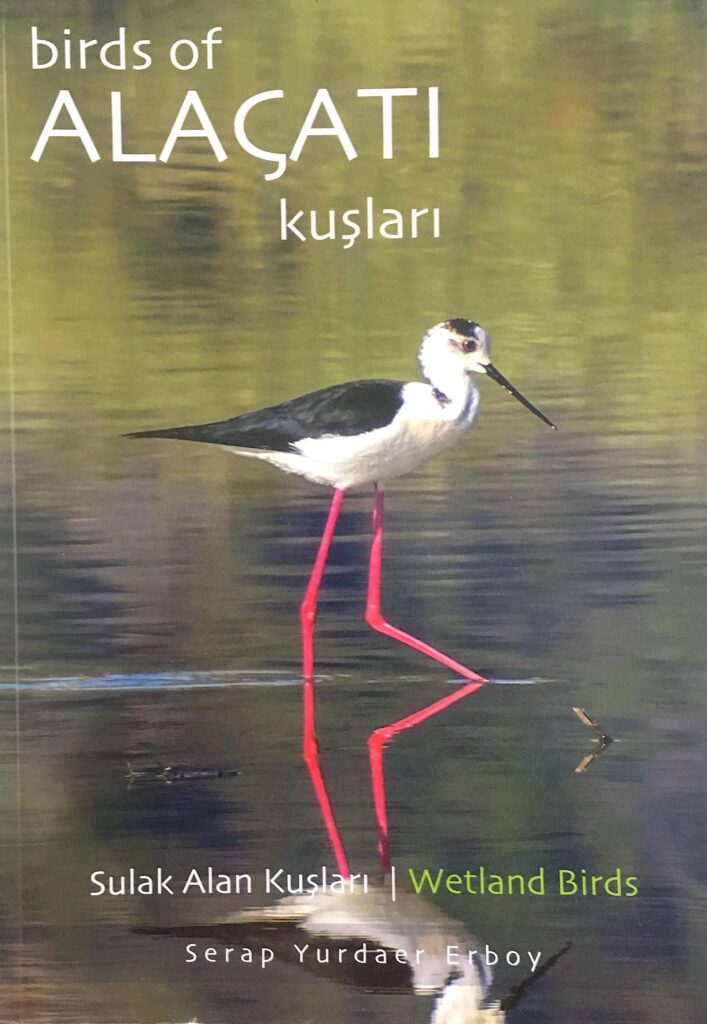
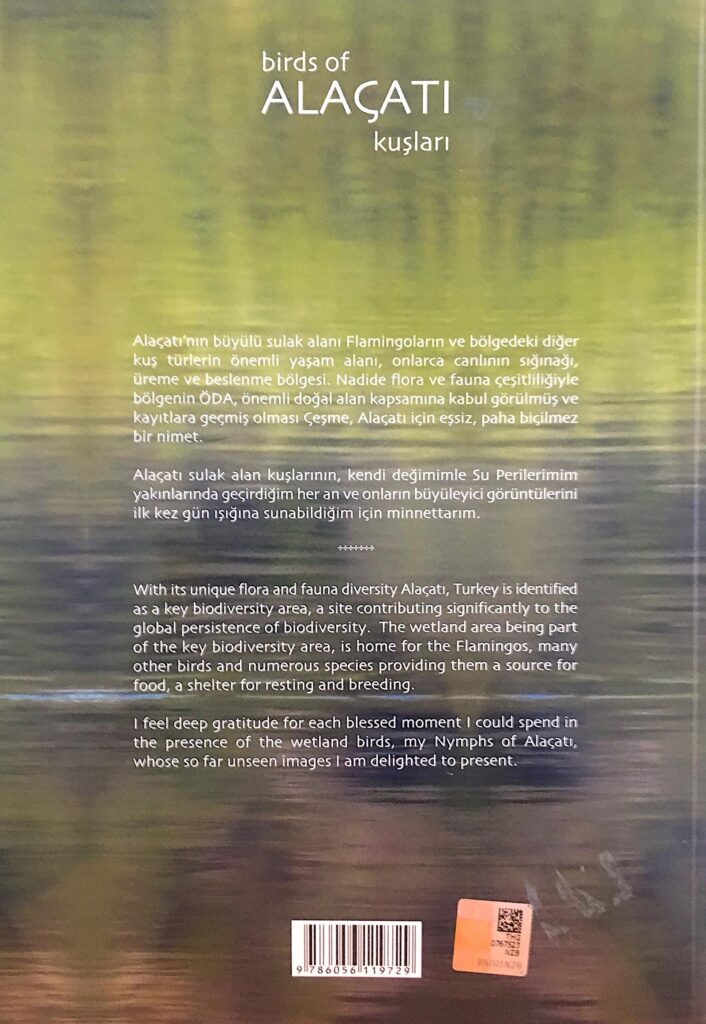
Serap Yurdaer Erboy published a 120-page paperback book “Birds of Alaçatı – Wetland Birds” – ISBN: 9786056119729 (see Amazon.com). Language: Turkish – English.
